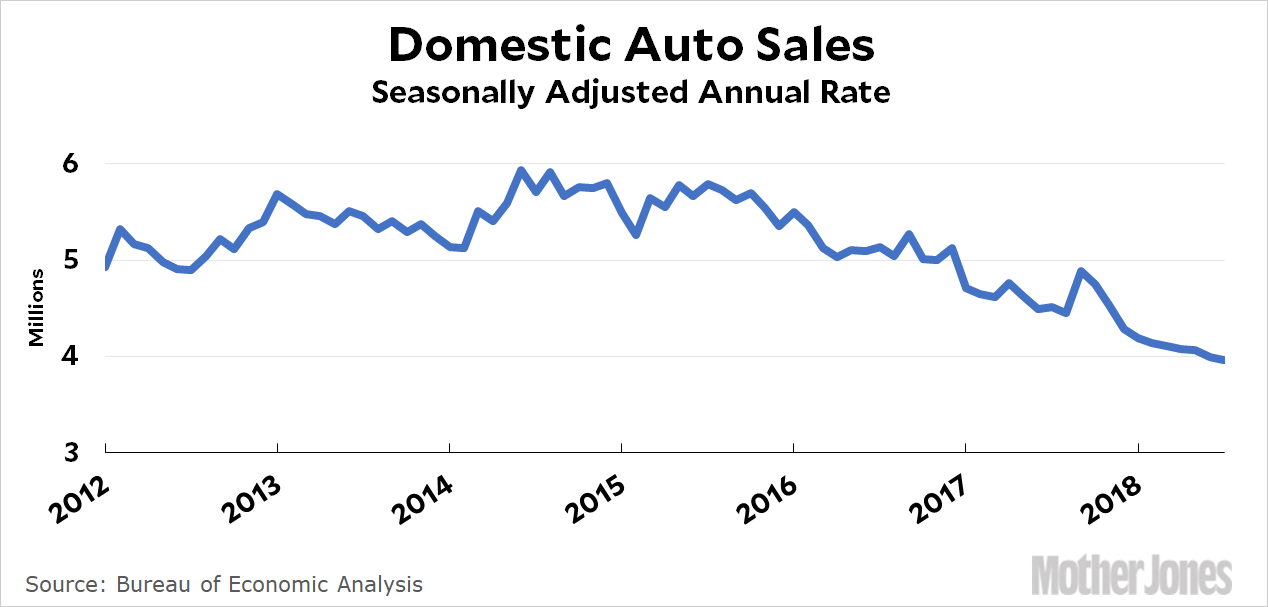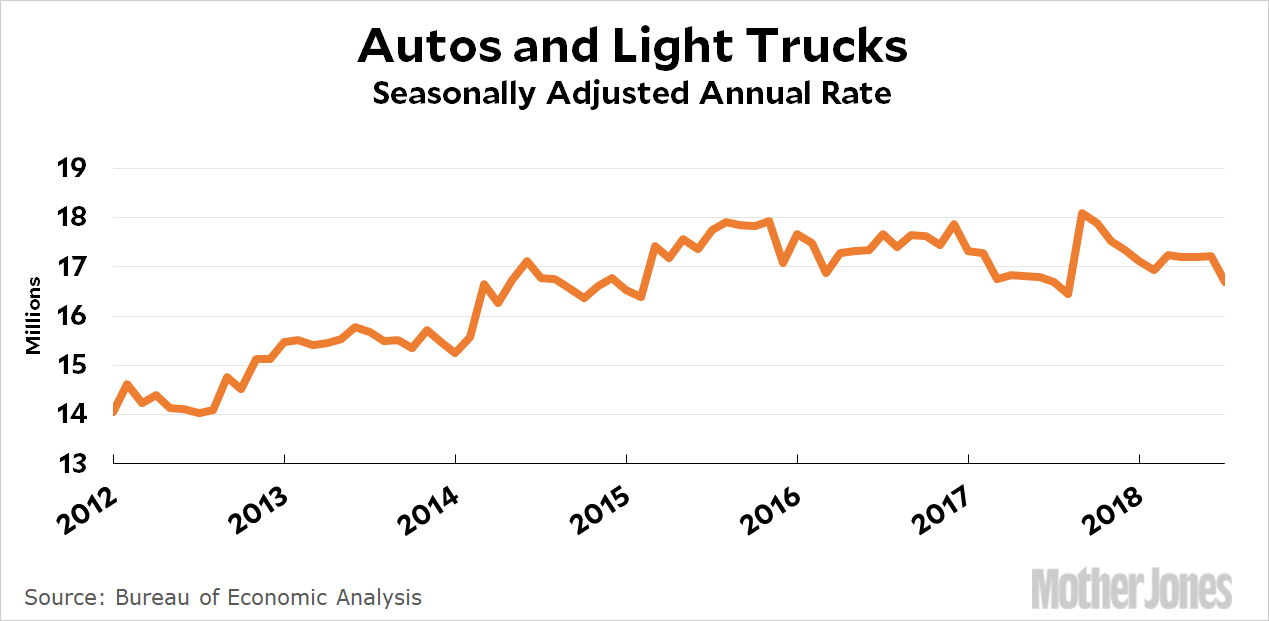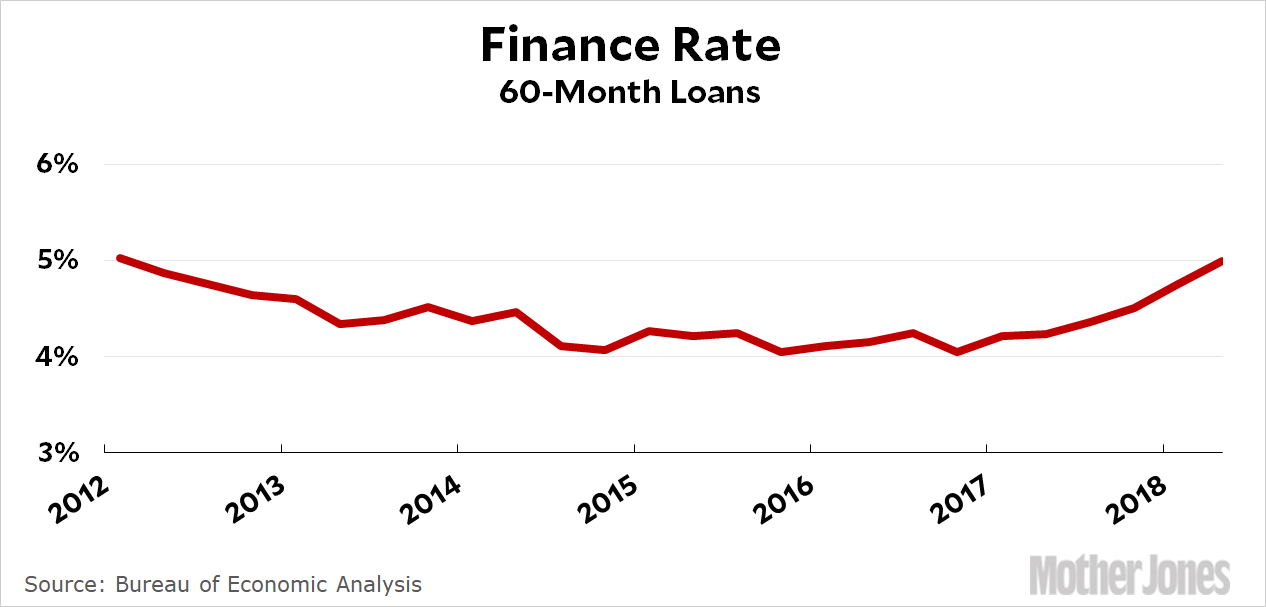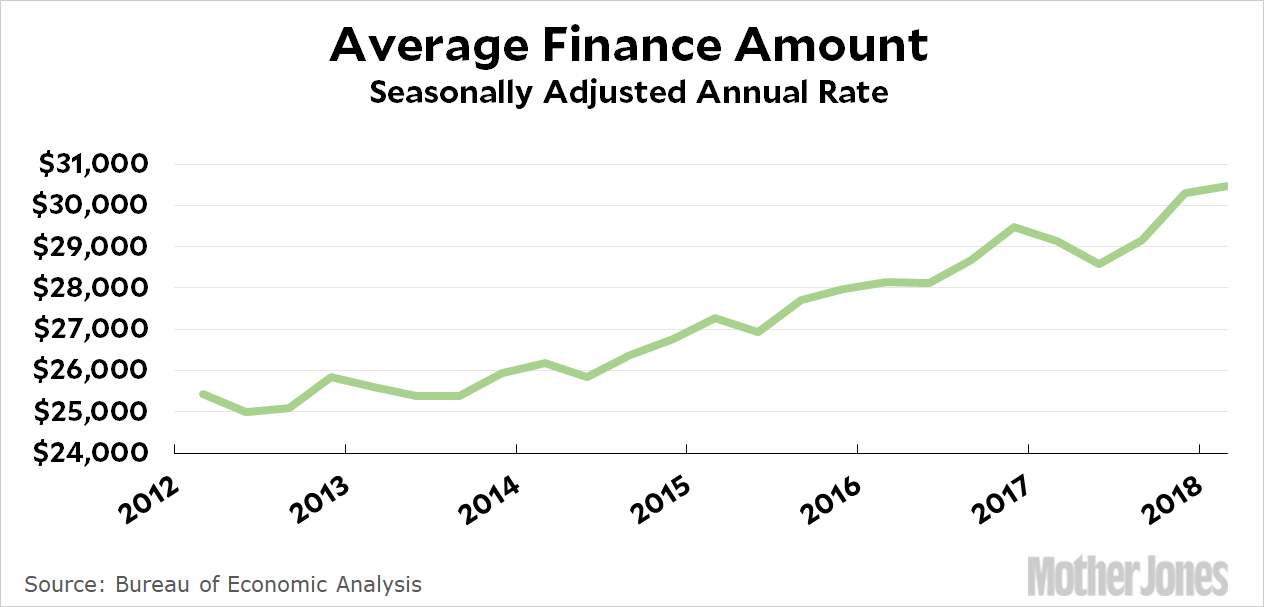I’m stuck in the infusion center for the day, so blogging will probably be a little slow today. This has nothing to do with having an IV drip hanging off my arm, and everything to do with being forced to use my tablet’s on-screen keyboard instead of the awesome mechanical switch keyboard connected to my desktop machine.
(Just as I wrote those words, the pharmacy finally delivered the IV bags containing the meds. So I should get out of here around 1 pm, just in time for an East Coast late-day document dump.)
Anyway, I decided to kill some time by checking in on the auto industry to see how it’s doing. First up, here are domestic auto sales:

Down, down, down! Nobody want ordinary cars anymore, not if they’re produced in America, anyway. Now here’s a chart that shows everything: both car and light truck sales (including SUVs), domestic and imported:

Sales reached a high of 18 million in 2016, but have drifted down to 17 million since then. The beginning of 2018 started out weakly, with sales of about 16.5 million vehicles. Part of this might be due to financing. Interest rates are drifting up:

And the total amount being financed is growing:

A few years ago, people were financing $26,000 at 4%. Today it’s more like $30,000 at 5%. Roughly speaking, that’s a difference of $480 per month vs. $570 per month. That’s more than $1,000 per year. Given the sluggish wage growth of the past few years, this makes it hardly surprising that auto and truck sales are sluggish too. It hardly matters if “the economy” is doing well when your personal paycheck isn’t going up but the price of a car is. MAGA.

















